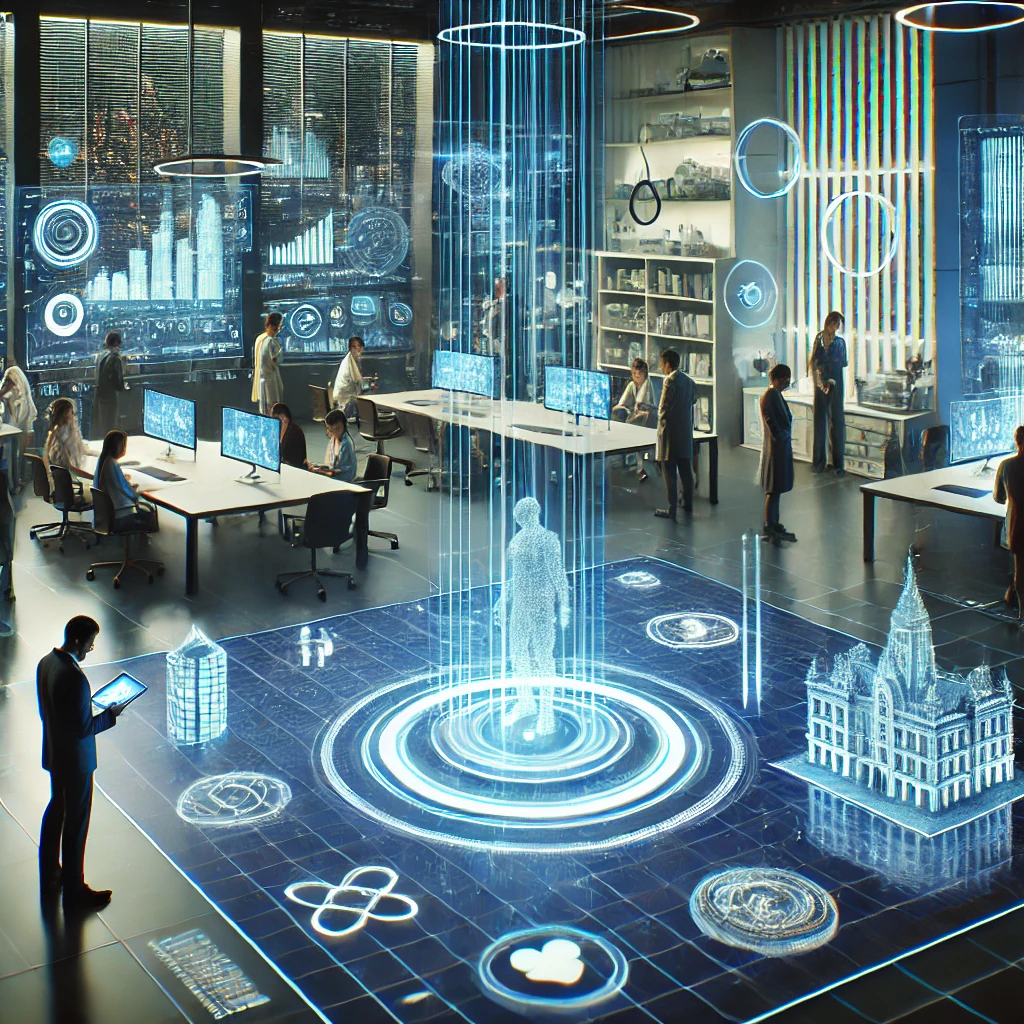The Rise of AR and Holography: Transforming Digital Experiences

Revolutionizing Digital Interaction
The convergence of Augmented Reality (AR) and holographic technology represents one of the most significant technological advancements of our time. This powerful combination is reshaping how we interact with digital content, communicate with others, and experience the world around us. As these technologies continue to mature, they're opening up unprecedented possibilities across various sectors, from retail and education to entertainment and professional collaboration.
Core Technology Integration
The integration of AR and holographic technology creates a unique hybrid system that combines the best of both worlds. While AR overlays digital information onto our physical environment, holography provides three-dimensional projections that appear to exist in real space. When these technologies work together, they create experiences that are both interactive and visually compelling. Modern systems incorporate advanced optical systems for holographic projection, alongside sophisticated motion tracking sensors that enable natural user interaction.
Transforming Retail Experiences
The retail sector stands as a prime example of how AR holography is revolutionizing customer experiences. Through virtual product demonstrations, customers can now examine holographic representations of products in their own environment, enhanced by AR interfaces that provide additional information and interaction capabilities.
Key benefits for retailers include:
Educational Revolution
Medical and Engineering Training
The impact on education and training demonstrates the versatility of AR holographic technology across different fields. In medical education, students can now interact with detailed anatomical models and practice procedures in a risk-free environment. Engineering students benefit from hands-on experience with complex machinery through virtual simulations, while technical training programs use the technology to teach maintenance and repair procedures more effectively.
Business Communication Enhancement
The transformation of remote communication through AR holography represents perhaps its most significant business application. Modern teleconferencing systems create natural and engaging remote interactions by presenting participants as three-dimensional holograms in shared virtual spaces. These systems enable collaborative work in ways previously impossible, allowing teams to manipulate holographic 3D models together and conduct virtual walk-throughs of projects.
Creative Industries and Entertainment
Entertainment and artistic expression have found new horizons through AR holography. Live performances now incorporate responsive holographic elements that create immersive, mixed-reality experiences. Artists explore these technologies to develop interactive installations that evolve with viewer participation, while venues use the technology to create memorable experiences that blend physical and virtual elements seamlessly.
Technical Considerations
Implementation challenges that organizations must address include:
Future Developments
Looking ahead, several exciting developments are already on the horizon. Advanced interaction methods, improved visual quality, and more sophisticated integration capabilities promise to make AR holographic experiences even more compelling and useful. Organizations that embrace these technologies now will be well-positioned to take advantage of future developments and provide cutting-edge experiences for their users.
Professional Applications
Professional applications continue to expand as the technology matures. Architects walk clients through virtual buildings, engineers collaborate on technical designs in real-time, and medical professionals consult with colleagues across the globe as if they were in the same room. This level of interaction and visualization helps reduce misunderstandings and accelerates decision-making processes across industries.
Industry Impact and Adoption
The potential for AR holography to transform various sectors remains vast and largely untapped. From enhancing customer experiences to revolutionizing professional collaboration, these technologies are creating new paradigms for how we interact with digital content and each other. As these systems become more sophisticated and accessible, their adoption across different sectors will likely accelerate, leading to even more innovative applications and use cases.
Looking Forward
The future of AR holography promises even greater capabilities and applications. Continued advancements in both hardware and software will bring new possibilities for interaction and visualization, while increasing accessibility will drive wider adoption across industries. Organizations that invest in understanding and implementing these technologies now will be well-positioned to lead in their respective fields as the technology continues to evolve and mature.
Want to get news from the world of holograms?
Sign up to our newsletter.

